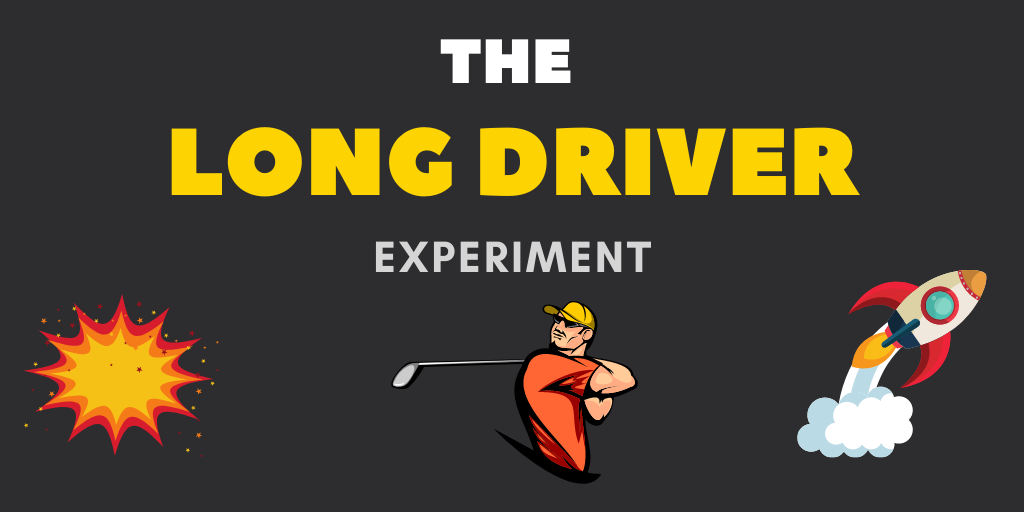
Anyone who pays attention to professional golf is aware of the explosion in distance. With modern analytics, we know more than ever that increasing distance off the tee gives golfers a better chance at lowering their scores. Keeping your card on the PGA Tour often comes down to a razor-thin margin. Players adding 10-20 yards with their drivers could mean the difference of making it or not.
But this website is not about professional golf. Practical Golf is entirely focused on helping everyday golfers like yourself find real ways to lower their scores.
At the recreational level, there has been no distance explosion. Most golfers still average 220-230 yards with their drivers. As such, adding distance is even more important for "normal" golfers. If you gave an extra 10 or 20 yards to a 15 handicap, it would have more influence on their scores than a professional golfer. We need all the help we can get!
To that end, I embarked on an experiment of my own.
In the past, I have valued the precision of using a shorter driver shaft. But I keep track of trends in equipment, and I was enticed by the prospect of trying a longer than normal driver shaft - which would be 47" or 48." My goal was to see if I could add enough distance without sacrificing too much accuracy. Additionally, I wanted to educate myself on the topic enough to see if it was an equipment change that other golfers should pursue.
This is perhaps one of the most ambitious projects I've taken on since I started the site. I spent a lot of time testing and speaking to various experts. There's a ton of information to sort through (even Physics, yikes).
As always, I'll try my best to give you a well-rounded explanation that doesn't confuse you too much.
I also want to give a quick thanks to all the people who took their time to share their expertise and get the right products into my hands - my dear friend Woody Lashen from Pete's Golf, Dave Neville and Gerrit Pon from Callaway Golf, and Gawain Robertson from ACCRA Shafts.
The Long and Short of It
From all of the conversations with experts and my own testing, I've learned that going with a longer driver shaft has many variables involved. If you want to pursue this, it is not as simple as buying a 47" or 48" shaft and slapping it on your driver's head.
This is more complicated than most equipment decisions, and as such, you should work with a clubfitter who knows what they are doing.
Because there is so much information in this article, here is a quick summary of my findings:
- Weight is the biggest issue. This pertains to both the driver's head and the shaft. Adding shaft length adds more overall weight. To counteract that, weight needs to be removed in the shaft, and possibly the driver head too. If you don't get this right, you might not gain any clubhead speed or possibly lose speed because the club is too heavy to swing.
- You will need to adjust the loft of the driver properly. Most golfers need to reduce loft with a longer shaft.
- A longer shaft can help certain golfers deliver the clubhead more efficiently, and for others, it could make their current problems worse. No rule of thumb fits all!
- In aggregate, most players see about a 10-15 yard gain in distance. This could vary greatly based on the golfer, though.
- According to some mathematical modeling, a player could gain as much at 2 mph in swing speed per added inch of shaft length. However, it is less in real-world testing: usually in the range of .8 mph - 1.6 mph per inch.
- In my testing, I gained about 3 - 5 mph in clubhead speed, added 10-15 yards of distance with 3" of added shaft length. And my accuracy did not suffer as much as I thought it would. I am thinking about using a 44" and 47" driver on the course and dropping my 3-wood. Yes, that sounds crazy. But I'll explain why later on.
The Overall Goal of a Longer Shaft
All things being equal, a longer driver shaft should generate more clubhead speed and offer more distance off the tee. As I've discussed before, adding distance is an important part of increasing your odds of lowering your score. That is the main reason any golfer would pursue a longer shaft.
But it's not that simple.
As you'll see, some variables need to be controlled in the shaft and driver head.
Also, I've found that the longer shaft's theoretical gains often don't match up with the real world. That's not to say it's a concept that golfers shouldn't pursue, but you do have to test properly and weigh your gains in distance versus any potential loss in accuracy and how you deliver the golf club at impact.
I Am Aware of What the USGA Said
After most of my testing was done and all of my notes from conversations gathered, I woke up one morning to the USGA's announcement that they are strongly considering limiting driver shafts to 46". Bummer!
Many believe this is in response to Bryson DeChambeau indicating that he would put a 48" driver into play in the 2021 season. Other pros have been testing longer shafts as well.
So my experiment might be a totally moot point. But we still don't know exactly when the ban will take place. It could be this year or further down the line. Also, it might be in the form of a Modified Local Rule, which would only apply to elite amateurs and professionals:
It is currently being contemplated that this Modified Local Rule, like other equipment related local rules would be recommended for use only in competitions limited to highly skilled players (that is, professional and elite amateur competitions).
Either way, you can take some of this information with a grain of salt. For the most part, I think it's an interesting exercise to make educated decisions with your equipment. I always want golfers to know that it's not as simple as listening to a company's marketing claims and just purchasing a club off the rack.
Weight Is Crucial
In my initial conversations with Woody Lashen, co-owner of Pete's Golf (my personal fitter and go-to for all equipment knowledge), the biggest problem he was trying to solve was getting the overall weight of the club set up properly for my testing.
We wanted to use the same driver head and shaft model, so it was as close to an "apple to apples" test as we could get. But the main challenge was making sure we could add or remove weight when necessary as I went back and forth between the two shaft lengths.

ACCRA sent me two of their latest prototype driver shafts in both 44" and 47". Additionally, we used Callaway's newest head, the Epic Max. I've been playing the Epic Flash the past few seasons, and this particular model suits my swing and has the ability for us to add and remove weight with its sliding track.
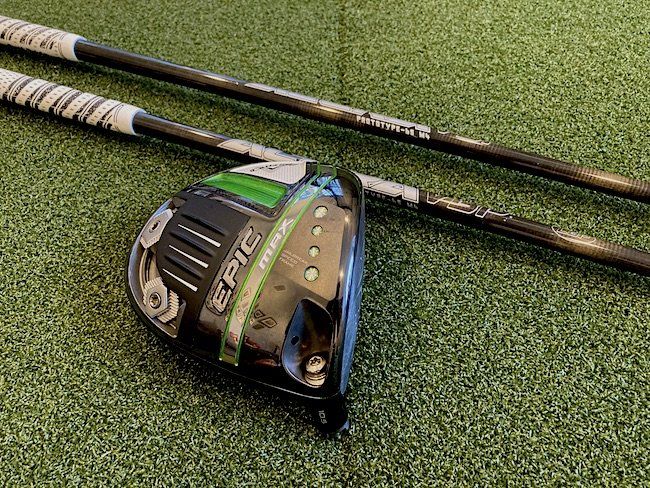
My normal driver shaft length is 44", which is shorter than standard (usually around 45.5"). When you go with a shorter driver shaft, you typically have to add weight to the head so the club's overall weight isn't too light. So we added two weights on the tracks of the Epic MAX when I used the shorter shaft. This was more straightforward since we knew this setup has been working well for me for years.

The issue arose with how much weight to remove when I tested the 47" shaft. If the head were too heavy, it would feel like I was trying to swing a sledgehammer!
Initially, Woody thought it best to remove only one of the weights and slide it towards the head's center. However, after testing quite a bit, I found that the club still felt too heavy. I achieved my best results when removing both weights.
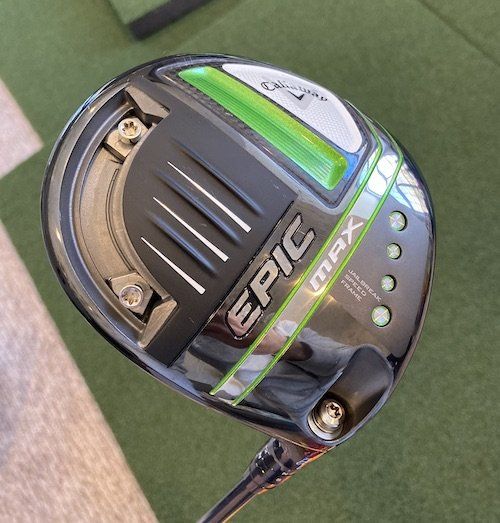
Going through this process myself, and speaking to various experts, showed me that getting the weight correct for a longer driver shaft is the most important element.
Shaft Considerations
To learn more about longer driver shafts, I had a long conversation with Gawain Robertson from ACCRA. They are a Canadian manufacturer of premium shafts, and I've been using their products for almost six years now. My goal was to understand the variables involved and see longer shafts fitting in amongst recreational golfers.
Gawain's main concern was about weight. If a golfer used a longer shaft and did nothing to remove weight, all potential benefits would disappear. He told me that most shafts weigh around 65 grams at 46 inches. But with a 47" or 48" shaft, he believed that going down to 50-55 grams was necessary.
Additionally, Gawain felt that counterbalancing the shaft would give fitters more options.
If you were to balance a standard 46" shaft on your finger, it would be about 24 inches from the tip. However, by adding more weight to the "butt" of the shaft, you can further shift the balance in that direction. In his opinion, counterbalancing longer shafts provides two main benefits:
- It will allow the clubfitter to achieve a more playable, finished driver.
- The golfer will generate more speed without the club feeling too heavy, which is the entire goal in the first place.
ACCRA is in the process (at the time of our conversation) of manufacturing a lower-cost, counterbalanced shaft for golfers who want to experiment going longer. He still felt longer driver shafts, in general, will be a niche product in the industry. He likened it to a concept of single-length irons.
I told him about my idea of having two drivers in my bag, and even he was considering a similar move. I view this as the likely scenario (though rare overall) for those who try adding length to their driver shaft.
Fitting Considerations
Anyone who understands golf equipment and clubfitting knows that the shaft is just one part of the equation. Everything has to work together to have a playable club on the course.
To that end, I spoke with Gerrit Pon from Callaway Golf. Gerrit works at Callaway's Performance Center in Carlsbad and is responsible for testing and building clubs for their professional staff. Players like Phil Mickelson, Xander Schauffele, and John Rahm rely on him to get their clubs dialed in. Additionally, plenty of regular golfers make their way through the facility, and they are always testing new equipment concepts to see how we mortals react.
Gerrit told me that Callaway has been testing longer shafts for about five years now, and their results have challenged some of the conventional wisdom. But of course, he noted that it's tough to create a rule of thumb because each player can react quite differently.
Here are some of the major trends he has noticed with longer driver shafts:
- Many golfers (especially the pros) end up being more accurate than they first assumed. Most would think that a longer shaft would make you wild off the tee, but they haven't found that to be the case across the board.
- Most players add about 10-15 yards of distance.
- Golfers who fight with a slice often see an improvement in their club path, and the longer shaft can help reduce excessive ball curvature. However, the opposite can be true for players who draw the ball. He's seen golfers with in-to-out swing paths really struggle.
- Typically they use a lighter shaft and remove about 5-8 grams from the weight of the head. Also, most players need to reduce the loft on the driver's head for the best results.
- Each player reaches a point of diminishing returns. Some golfers can't generate more clubhead speed at 47" and beyond.
Further Caveats
If I haven't provided you with enough information to make your head spin, there's even more.
Dr. Sasho Mackenzie, a leading resource on clubhead speed in the golf industry, posted this great video which gives a very "laymen" explanation of the physics behind longer driver shafts. If you want extra credit, I suggest you watch it. I promise there won't be a test at the end of the article, though!
In theory, adding 1" of shaft length should add upwards of 2 mph of swing speed. But in reality, most players will see about a .8 to 1.6 mph increase for each inch. This will vary by the golfer.
For example, in my testing, when I went from a 44" shaft to a 47" shaft, I noticed about a 3 - 5 mph jump in clubhead speed in almost all of my sessions, which is consistent with that range.
However, there is even more to consider...
When you remove weight from the driver head, which is almost always necessary with a longer driver shaft, a few things happen:
- The driver will transfer less energy. In other words, the amount of ball speed you generate from your swing speed will drop a little bit. Think of this as a loss of efficiency, and your smash factor will suffer a bit. So while you are swinging faster, the drop in driver head weight will reduce some of your potential distance gains (golf ball speed plays the most important in driver distance).
- The Moment of Inertia (MOI) will drop. MOI is a measure of forgiveness, or how much the clubhead resists twisting on off-center strikes. Put simply, your mishits will be more offline with the lighter driver's head, and accuracy will suffer. Striking the center of the face becomes more important.
I'm going to show you some of my "home run swings" from the longer driver shaft. To be honest, they were intoxicating. But the tradeoffs that Sasho MacKenzie mentions are very real. With the longer shaft, you will sacrifice a few things, which will diminish the potential gains in distance, and possibly make your errant shots a bit more penal.
My Testing
Whenever I consider an equipment change, I try to do my due diligence. I've learned a lot about clubfitting over the years from Woody Lashen, so I can conceptually understand how making a change may or may not benefit me on the course. But most importantly, I want to test things thoroughly before I put something new into play.
For the past few seasons, I have used my fairway wood sparingly. I rarely hit it off the tee anymore when I proved that it wasn't any more accurate than my driver. Additionally, due to my tendencies, I sometimes struggle to get the ball high enough in the air to use it enough on longer approach shots (usually a par 5). So, for the most part, I have an open spot in my bag.
I don't want to ditch my 44" driver because it is so valuable to me. But what if I could use a longer driver on holes that were more wide open off the tee? If I could prove that it added distance without being too inaccurate, it would surely stack the scoring odds in my favor a little more. Golf is a game of proximity, so if I can have a shorter club on approach shots, it will give me a better opportunity to score.
So while I first thought Phil Mickelson was a lunatic for putting two drivers in his bag a few years ago, the idea was growing on me since I technically have nothing to lose in my bag.
I Still Had My Doubts
I had biases about the longer driver shaft coming into this experiment, to be completely honest with you. I played a shorter driver shaft for almost five years and felt it was one of the best equipment changes I've ever made. I've been able to tighten my dispersion, which was a real problem for me in the past off the tee. I believe it's one of the main reasons I've been able to become a scratch golfer.
I have some older drivers that I have hung on to from about 10-15 years ago with 46" shafts. When I have used them sparingly, they felt odd to me since I was so used to a shorter shaft.
But at the same time, I feel I've improved my technique, especially how I control my clubface at impact. So if there was ever a time to try something like this, it's now.
After coordinating with Woody Lashen, ACCRA, and Callaway, I had two shafts to try out and a new driver head. As I mentioned earlier, when using the 44" shaft, I added weight back into the Callaway Epic MAX. When using the 47", I removed it.
For the past six weeks, I've probably hit more than a thousand drives with both shafts. I used my SkyTrak launch monitor to evaluate my ball flight (particularly spin rates, launch angle, distance, and dispersion).
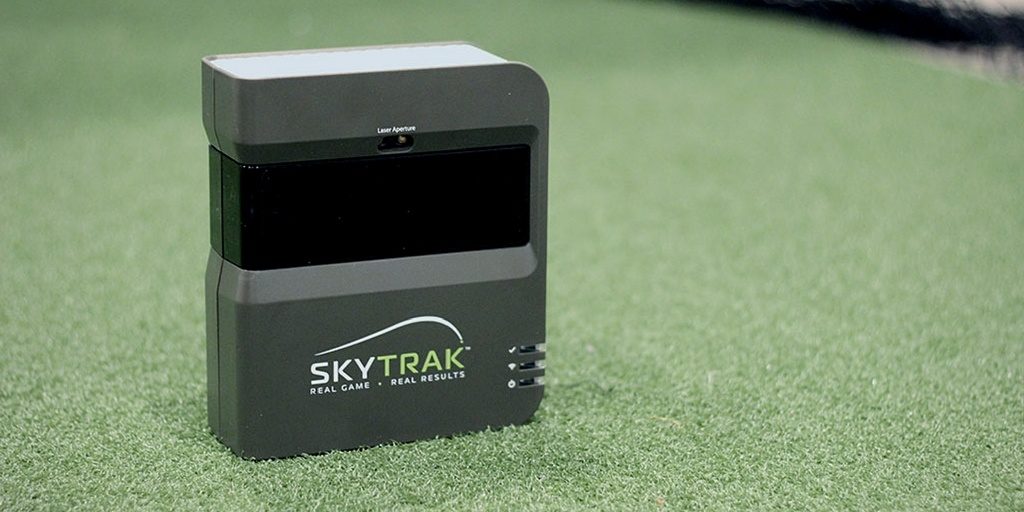
Additionally, I used the PRGR launch monitor to better read my swing speeds (SkyTrak does not measure swing speed directly).
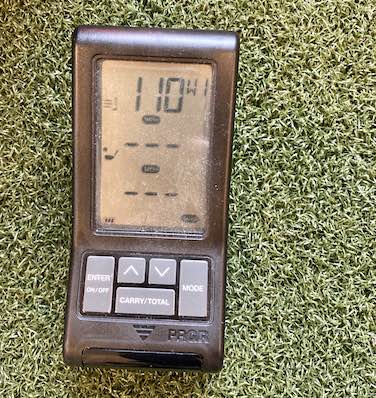
On the whole, I was surprised, even from the first few shots with the 47-inch shaft. The added distance was significant on my best swings, but more surprisingly, I did not struggle as much as I thought I would, striking the center of the clubface and controlling where the clubface was pointed at impact. I believe a lot of that had to do with getting everything dialed in properly.
After my initial testing, I found that setting the Epic MAX head to 10.5 degrees with the 47" shaft and 12.5 degrees with the 44" shaft gave me the optimal launch conditions I was looking for. The remaining factors I wanted to figure out were the following:
- How much extra clubhead speed did the 47-inch shaft generate?
- If there was more clubhead speed, was it translating to a significant increase in ball speed (the most important measurement) and total distance?
- Was my dispersion much wider with the longer shaft? Does it cost me significant accuracy?
What I am Looking For
OK, you're probably at the "show me the damn results already" stage of this article. But please keep in mind that my data is only for anecdotal purposes. Your results will likely be different than mine, as is true with any experiment I do on Practical Golf. I'm merely trying to provide you with some context to educate you more on the topic.
I am not built for speed and distance. I'm 5'8", 153 lbs, and have short arms and legs. However, I do get it out there farther than most people would assume. I've been working on clubhead speed more and more lately with SuperSpeed Golf. A good drive for me is usually in the neighborhood of 275-280 yards. I've been able to get my speed back up around 105 mph or so with the shorter shaft and plan to keep working on it.
But I've mostly maxed out my driving efficiency. So the only way I'm adding more distance at this point is with more clubhead speed.
Let me start with the shot that I was texting all of my friends and posting on Twitter immediately.
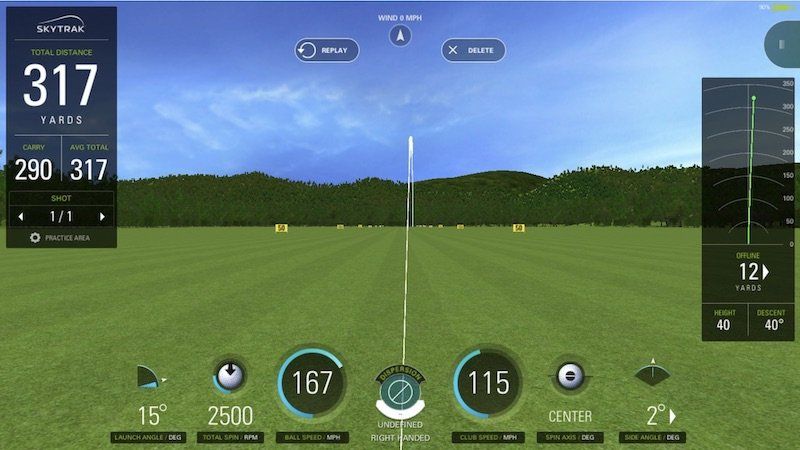
This was a "holy crap" moment for me. Going from flying the ball from about 255-260 yards all the way to 290 yards was more distance than I ever expected. And to be fair, this is the absolute best I can do, not a normal swing.
When I first got the 47" shaft, I immediately hit shots farther than I ever had on my SkyTrak and generated more clubhead speed. But as I worked with the longer shaft more and more, I continued to see more gains. There was a period of adjustment where I had to get my "feels."
I had plenty of sessions where I went back and forth between the shafts. I was keeping track of all of the parameters so I could gauge what the gains were. I feel as though I have a good baseline.
Comparison
Here are some aggregate data from two sessions with each shaft that I think represents my overall results fairly well.
In some sessions, the distance disparity between the two was larger, sometimes as much as 20-30 yards. But I think on the whole, when I factor in my mishits, I'm comfortable saying that the longer shaft is adding 10-15 yards to my drives on average. I believe I can widen that range over time, though.
Occasionally, I'll hit some massive drives where my swing speed can top 112-114 mph and drive it well over 300 yards. As I work towards increasing my swing speed, I think those are attainable speeds and distances I can reach more often.
The Dispersion Surprised Me
The increase in distance was the least surprising part. I knew I would hit the 47-inch driver farther. What was interesting was that I was more accurate with the longer shaft than I initially had assumed.
I set up a relatively forgiving fairway (35 yards wide) in two tests and hit 25 shots each with each driver. With the shorter shaft, I was able to hit 76% of the fairways.
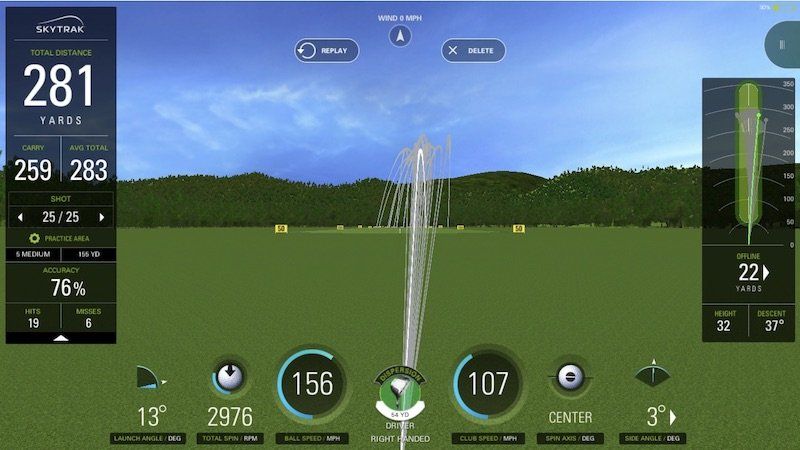
Surprisingly, I was still able to hit 64% of the fairways with the 47" shaft. But as I've said before, fairways hit is not the best measuring stick for success. You also have to take into account your total distance and dispersion. If you are adding distance, is it getting you into trouble? Or are you giving yourself a playable approach shot most of the time?
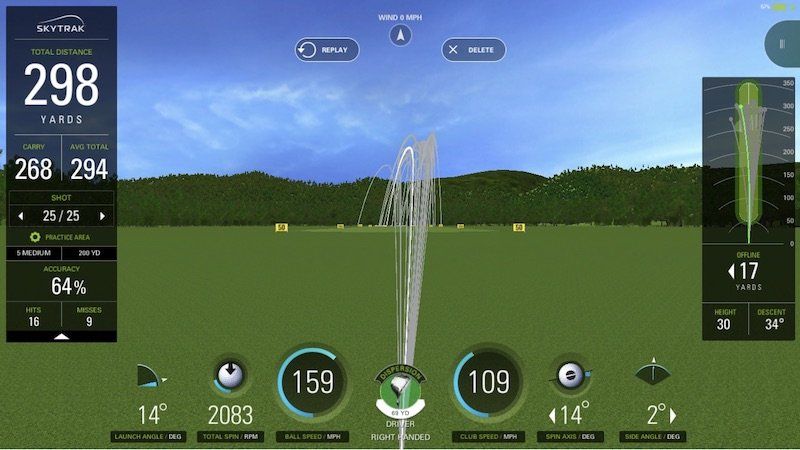
That's not to say I didn't have some big misses with the 47" shaft. Those occurred when I missed the center of the face and/or couldn't control where the clubface was pointing at impact.
But on the whole, looking at my dispersion patterns, they weren't all that different than what I'm used to. Whenever I do longer sessions on my SkyTrak with my 44" driver, they are typically 60-70 yards.
Outside of a few outliers, which is typical for my driver, the bulk of the shots with the 47" shaft were in a very playable spot. I see just under a 70-yard wide total dispersion window, which is definitely playable on the course.

I will note that the dispersion with my 44" driver was tighter than it's ever been. I don't think I've ever registered a session at under 60 yards wide, and in this one, I was at 54 yards. I don't know for sure why this is, but I have two theories:
- The equipment upgrade: The combination of the newer shaft from ACCRA and Callaway's head gives me more control over the club.
- After going back and forth between both shaft lengths, the 44" shaft feels even shorter. Working with the longer driver almost felt like a training aid. It required even more skill to control strike location and face angle, and I believe that is helping me have more confidence with the shorter driver shaft.
The Big Takeaways
I am encouraged by the results of the testing I've done over the past 6 weeks. Granted, this was done in a consequence-free environment, but that's where all equipment decisions should start. I've proven to myself that I can hit the 47" driver farther and with enough control where it should not cost me more strokes than it's gaining me.
So I will start the season pursuing the two-driver experiment. Using my home course as an example, I believe there are eight holes where I would use the longer driver and give me an advantage. But our course is more forgiving than most off the tee. So there are other layouts where I would use it much less (if at all). You can learn more about how I plan my tee shots from this article.
I'm also excited to try them out in tournaments. I play anywhere from 8-10 events a year, and hopefully, a small advantage like this can get me into the U.S. Mid-Amateur that I've missed out on by a small-ish margin before.
As I stated earlier, this decision is easier for me because I don't use my fairway wood often.
However, if for some reason I see results on the course over the long run that are too costly, then I am reserved to going back strictly to the 44" driver only.
My Recommendation For Other Golfers
Based on all my testing and my conversations with experts, I believe this is a niche equipment change.
Purchasing a 47" or 48" driver shaft is not necessarily going to be an off-the-shelf solution. Many golfers are knowledgeable enough about club fitting to tinker and experiment with the weighting and measure on launch monitors. But on the whole, I'd say anyone who wants to pursue this will have to work with a clubfitter. Because if you get it wrong, you likely will not see any gains.
There's no chance I could have done this experiment without the help I received.
In the near term, you might see the equipment industry embrace this concept. As I mentioned, ACCRA was currently developing longer shafts that were counterbalanced. Additionally, Callaway just announced longer driver fitting packs. Here's an example of one for the Epic MAX that I used for my testing. The kit will allow golfers to lighten the weight of the head, reduce loft, and purchase a lighter shaft.
The other problem is that the USGA could ban drivers that are longer than 46". I don't know when it's coming; it might not be until 2022 or even beyond. Also, they may allow golfers not competing in elite tournament events to use them.
But I'll admit, it was really fun to try this out. Like many of you, I love seeing how far I can hit a golf ball. And I can't wait to see some of the bombs on the golf course!
We care about the protection of your data Read our Privacy Policy